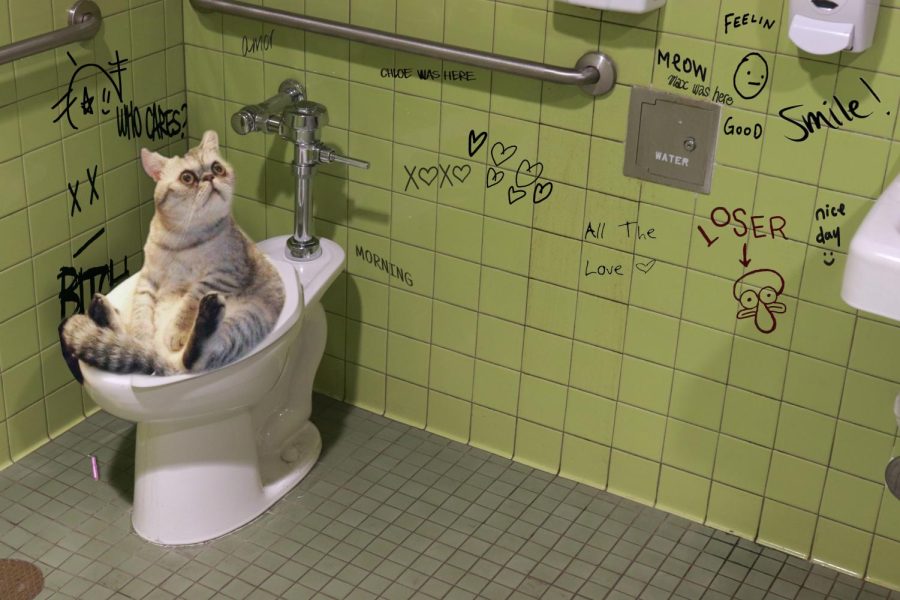Avoid Clogs and Damage: Never Flush Cat Poop Down Your Toilet - Professional Recommendations
Avoid Clogs and Damage: Never Flush Cat Poop Down Your Toilet - Professional Recommendations
Blog Article
Everybody is bound to have their personal thinking about Can You Flush Cat Poo or Litter Down the Toilet?.

Introduction
As pet cat owners, it's essential to bear in mind how we take care of our feline good friends' waste. While it may seem hassle-free to purge cat poop down the bathroom, this practice can have damaging effects for both the environment and human wellness.
Ecological Impact
Flushing feline poop presents damaging virus and bloodsuckers into the supply of water, posturing a significant risk to water environments. These impurities can adversely impact marine life and compromise water quality.
Health Risks
In addition to environmental concerns, purging cat waste can additionally pose health and wellness dangers to humans. Feline feces may contain Toxoplasma gondii, a bloodsucker that can trigger toxoplasmosis-- a possibly extreme illness, specifically for expectant ladies and individuals with damaged body immune systems.
Alternatives to Flushing
The good news is, there are much safer and more liable methods to get rid of cat poop. Take into consideration the following choices:
1. Scoop and Dispose in Trash
The most common approach of throwing away pet cat poop is to scoop it into an eco-friendly bag and throw it in the trash. Make sure to make use of a dedicated trash inside story and take care of the waste promptly.
2. Use Biodegradable Litter
Select eco-friendly pet cat clutter made from products such as corn or wheat. These litters are environmentally friendly and can be safely taken care of in the garbage.
3. Hide in the Yard
If you have a backyard, take into consideration hiding feline waste in an assigned area away from veggie gardens and water resources. Make sure to dig deep enough to stop contamination of groundwater.
4. Set Up a Pet Waste Disposal System
Buy an animal waste disposal system specifically created for cat waste. These systems utilize enzymes to break down the waste, reducing smell and environmental influence.
Conclusion
Liable pet ownership prolongs past providing food and shelter-- it likewise includes correct waste monitoring. By refraining from flushing cat poop down the bathroom and selecting different disposal approaches, we can lessen our ecological footprint and safeguard human health and wellness.
Why You Should NEVER Flush Cat Poop (and/or Litter) Down Your Toilet
The Problem with Litter
The main function of litter is to solidify and adhere to your cat’s waste. While this makes litter excellent for collecting cat poop and urine, it’s also the exact property that makes it a nightmare when flushed down the toilet.
Cat litter can and will clog pipes. There is non-clumping litter, but it’s still quite heavy and can build up in pipes. This is true even of supposed “flushable litter.”
The problems only compound when the litter is already clumped into cat waste. Toilet paper is among the more flushable things, and even too much of that will clog a toilet.
The Problem with Cat Poop
Sewers and septic systems are designed with human waste in mind. The microbes that help break down human waste don’t work on cat waste. Additionally, cat poop plays host to the parasite Toxoplasma gondii.
When flushed, this parasite can enter the environment in places it was never meant to, posing a risk to pregnant women, their unborn children, and other people with compromised immune systems. While it might not seem possible, flushing cat poop can indeed introduce this parasite to the public water supply.
These reasons are why, even if you’ve trained your cat to go on the toilet and flush, which is possible, it’s still not a good idea. Also, pregnant women and the immunocompromised shouldn’t change litter, either.
How to Handle Litter
The best way to handle litter is to simply put it in a plastic bag and place it in the trash. Avoiding environmental risks and possible plumbing damage is worth the extra effort.
You can also invest in devices that seal away your cat’s waste in a separate compartment, so you don’t have to change the litter nearly as often. They’re also safer for pet owners because they limit the possibility of Toxoplasma gondii exposure.
Disposing of litter the old-fashioned way will ensure you won’t have to worry about any issues that flushing the waste can potentially cause.
Take Care of Clogged Pipes with Stephens Plumbing, Heating & Air Conditioning
The reasons you should never flush cat poop down your toilet are numerous, but sometimes the inevitable happens despite your best efforts.
Stephens Plumbing, Heating & Air Conditioning is ready to help if you’re experiencing litter-blocked plumbing. Whether you need us in an emergency or want to schedule regular maintenance, we’re here for you.
https://www.stephensplumbing.net/bathroom-plumbing/never-flush-cat-poop-down-your-toilet/

As an enthusiastic reader on Don’t flush cat feces down the toilet, I think sharing that segment was a good thing. If you enjoyed reading our blog entry plz don't forget to pass it around. I thank you for reading our article about How to Dispose of Cat Poop and Litter Without Plastic Bags.
This Site Report this page